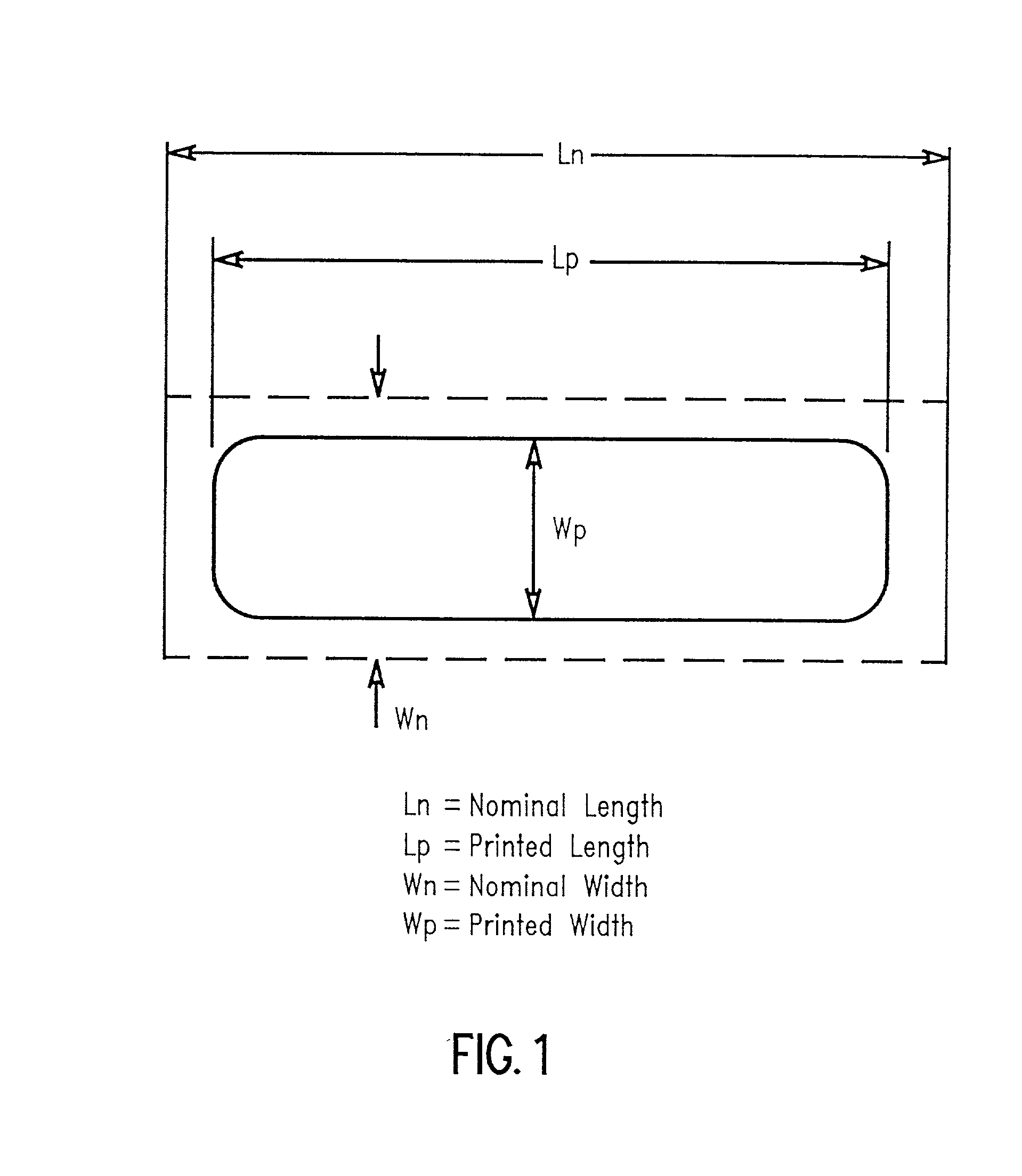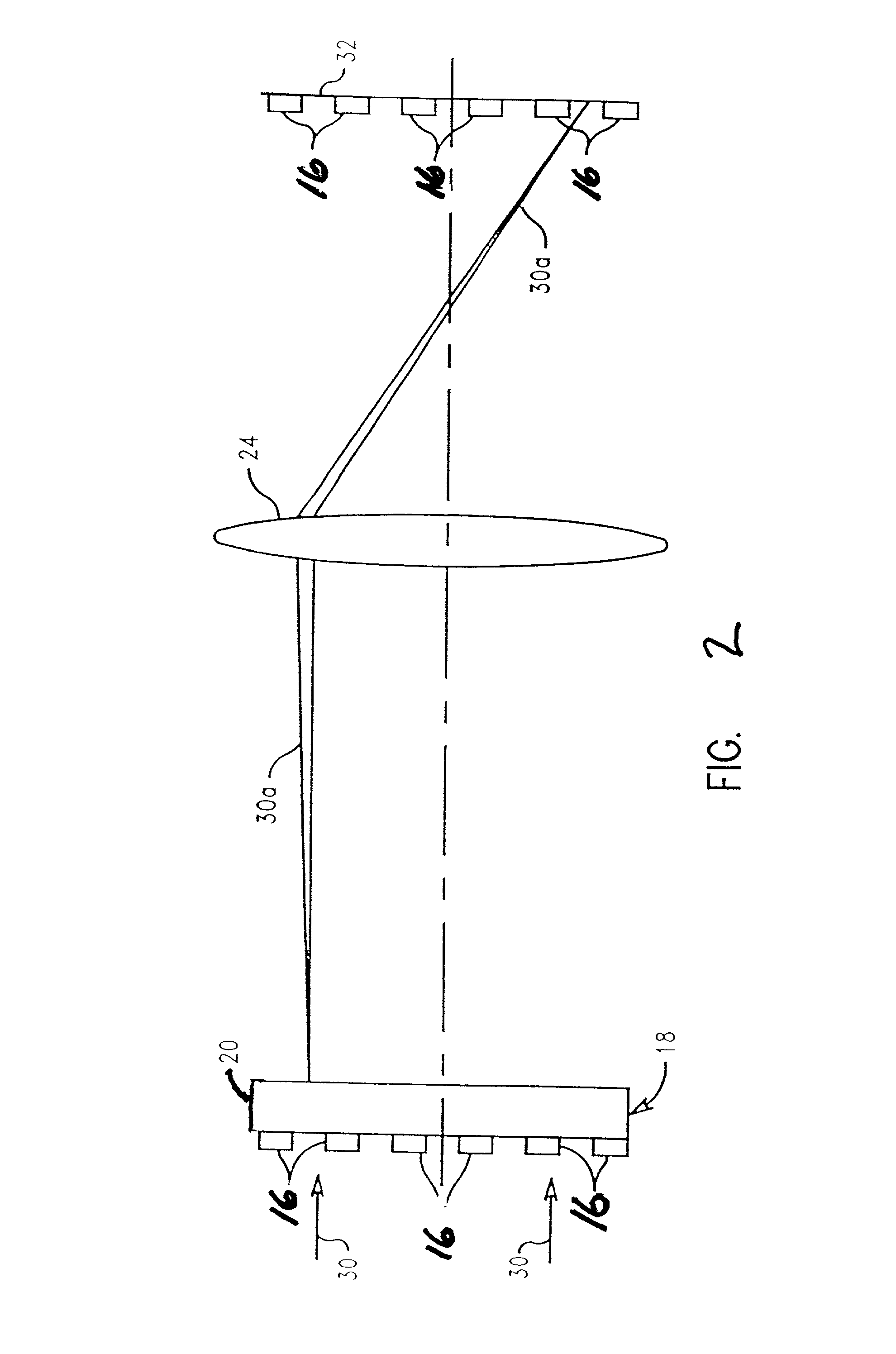Single tone process window metrology target and method for lithographic processing
a single-tone process and metrology target technology, applied in the direction of microlithography exposure apparatus, instruments, measurement devices, etc., can solve the problems of not being able to determine the effect of focus, not being able to print dual-tone targets, and not being able to provide electrically testable monitors
- Summary
- Abstract
- Description
- Claims
- Application Information
AI Technical Summary
Benefits of technology
Problems solved by technology
Method used
Image
Examples
Embodiment Construction
)
[0031] In describing the preferred embodiment of the present invention, reference will be made herein to FIGS. 1-8 of the drawings in which like numerals refer to like features of the invention. Features of the invention are not necessarily shown to scale in the drawings.
[0032] The concept of image shortening in photolithographic targets is disclosed in U.S. Pat. Nos. 5,712,707 and 5,976,740, the disclosures of which are hereby incorporated by reference. The concept of image shortening is incorporated in the present invention which provides both an image shortening visual test pattern or target, for low resolution metrology targets, and an electrically testable image shortening monitor, for high resolution metrology targets. As disclosed in U.S. Pat. No. 5,976,740 the simultaneous tracking of line and space length enables the unique solution of relative dose and focus measurements. By measuring the resistance of structures affected by this image shortening phenomena, it is possible...
PUM
| Property | Measurement | Unit |
|---|---|---|
| width | aaaaa | aaaaa |
| width | aaaaa | aaaaa |
| length | aaaaa | aaaaa |
Abstract
Description
Claims
Application Information
 Login to View More
Login to View More - R&D
- Intellectual Property
- Life Sciences
- Materials
- Tech Scout
- Unparalleled Data Quality
- Higher Quality Content
- 60% Fewer Hallucinations
Browse by: Latest US Patents, China's latest patents, Technical Efficacy Thesaurus, Application Domain, Technology Topic, Popular Technical Reports.
© 2025 PatSnap. All rights reserved.Legal|Privacy policy|Modern Slavery Act Transparency Statement|Sitemap|About US| Contact US: help@patsnap.com



